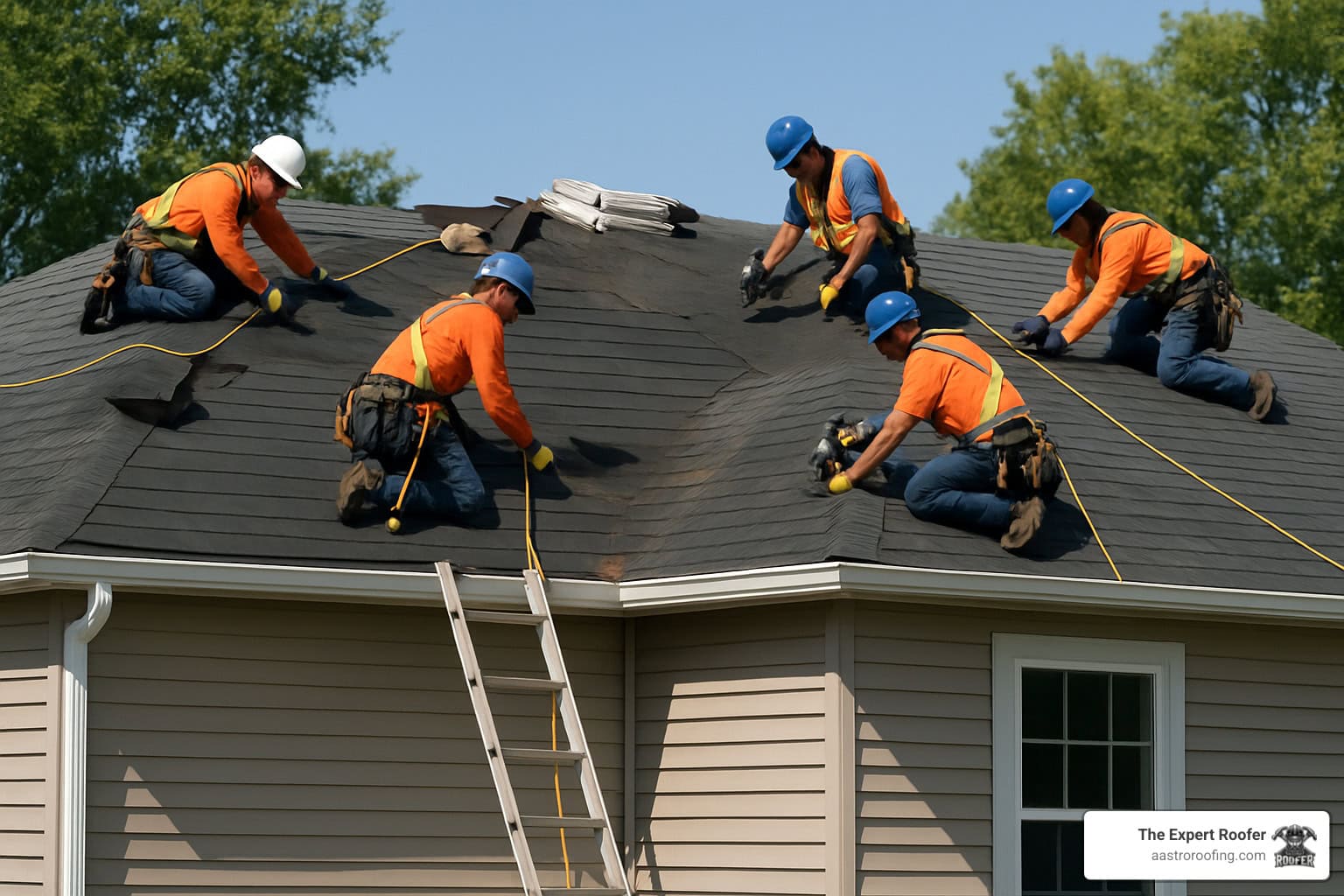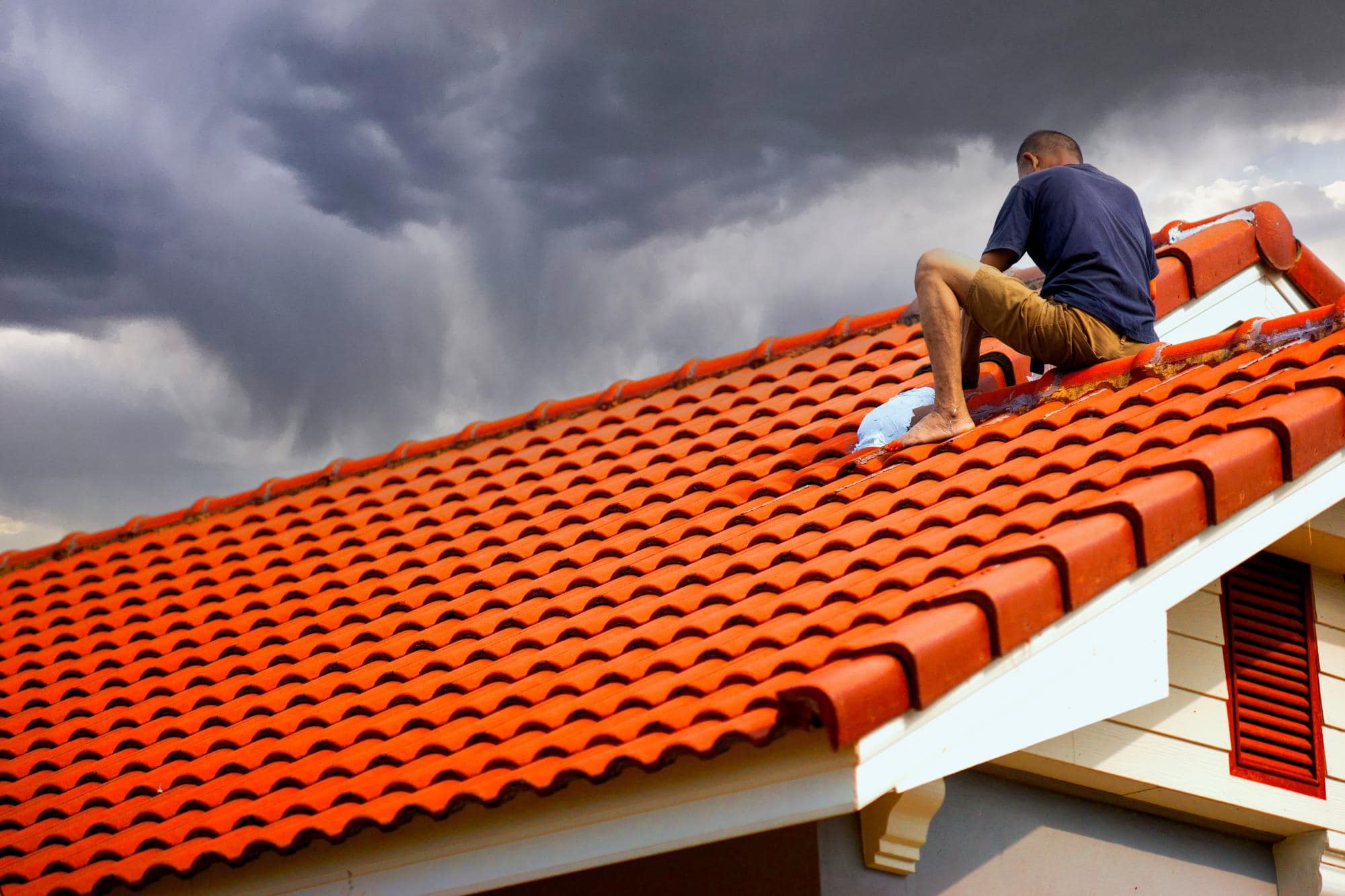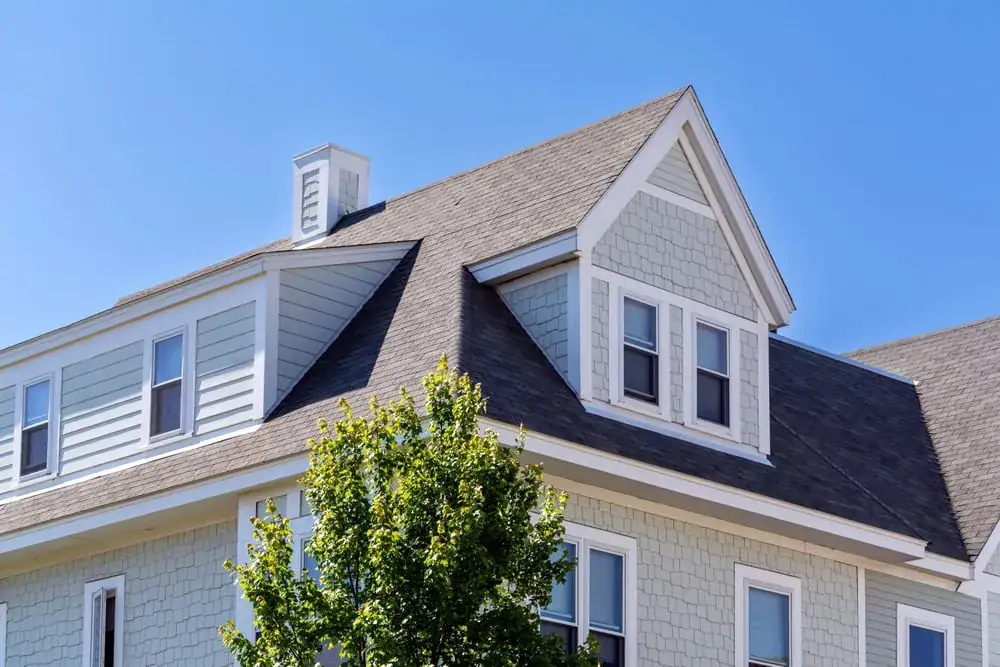Summary:
Pre-Project Safety Assessment and Planning
Before anyone steps foot on your roof, we conduct a comprehensive safety evaluation of the entire work area. This isn’t just about liability – it’s about ensuring the repair process doesn’t create new problems.
Our assessment covers structural integrity, weather conditions, and potential hazards that could compromise both worker safety and repair quality. We also evaluate access points and material staging areas to prevent damage to your landscaping or property during the repair process.
Thorough Roof Inspection Beyond the Obvious Problem
Most homeowners call for roof leak repair after they’ve already spotted water damage inside their home. But we know that visible leaks often indicate multiple underlying issues that need attention.
Our quality inspection examines the entire roof system, not just the obvious problem area. This includes checking flashing around chimneys and vents, examining gutters and drainage systems, and identifying potential weak spots that could become tomorrow’s emergency repair calls. For flat roof repair situations, this means checking for ponding water, membrane deterioration, and proper drainage slopes.
Our goal isn’t to sell you more work – it’s to prevent callbacks and ensure your repair investment actually solves the problem. When contractors only patch the visible issue without addressing root causes, you end up paying for the same repair multiple times. We document everything we find and explain which issues need immediate attention versus what can be monitored over time.
This comprehensive approach is especially important for commercial roof repairs, where small leaks can quickly escalate into major property damage and business interruption costs.
Material Selection and Quality Standards
The materials used in your roof repair directly impact how long the fix will last. We don’t just grab whatever’s cheapest or most readily available – we match materials to your specific roof type, local weather conditions, and long-term performance expectations.
For residential roof repair projects, this means using manufacturer-approved materials that integrate properly with your existing roof system. Mixing incompatible materials or using substandard products is a recipe for premature failure. We maintain relationships with multiple suppliers and carry certifications from major manufacturers like GAF, CertainTeed, and others.
Emergency roof repair situations often require temporary solutions, but even these temporary fixes should use quality materials designed for the specific application. A tarp thrown over a leak might stop water temporarily, but proper emergency repairs use materials that can withstand wind and weather until permanent repairs can be completed.
Commercial flat roof repair requires specialized materials designed for low-slope applications. Using residential shingle repair techniques on commercial flat roofs is a common mistake that leads to recurring problems and voided warranties.
Installation Process and Quality Control
How the repair work gets done matters just as much as what materials are used. We follow manufacturer specifications and industry best practices for every step of the installation process.
This includes proper surface preparation, correct fastener placement, and appropriate sealing techniques. Rushing through these steps to move on to the next job is where most repair failures originate.
Weather-Appropriate Scheduling and Conditions
Florida’s weather patterns create unique challenges for roof repair work. We understand that attempting repairs in inappropriate weather conditions compromises both safety and repair longevity.
Most roofing materials require specific temperature and humidity ranges for proper installation. Sealants won’t cure properly in high humidity, and extreme heat can make materials difficult to work with safely. Rain obviously stops most repair work, but even high winds can make roof work dangerous and prevent proper material application.
We monitor weather forecasts carefully and communicate realistic timelines based on actual conditions, not just our schedule preferences. For emergency roof repair situations, we focus on temporary weatherproofing measures when conditions don’t allow for permanent repairs.
This weather-conscious approach is particularly important for leaky roof repair projects, where rushing to complete work in poor conditions often results in repairs that fail quickly. It’s better to properly protect the area and wait for appropriate conditions than to attempt repairs that won’t hold up.
Final Inspection and Documentation Process
The work isn’t finished when the last nail is driven or the final seal is applied. We conduct thorough final inspections to verify that all work meets our standards and manufacturer requirements.
Our inspection process includes checking all repair areas, verifying proper water flow and drainage, and ensuring that no debris or materials have been left behind. For commercial roofing repair projects, this often includes photographic documentation for property management records and insurance purposes.
We also provide clear documentation of what was repaired, what materials were used, and what warranties apply to the work. This documentation becomes crucial if you need to file insurance claims or if issues arise later that might be covered under warranty.
The final walkthrough includes explaining what work was completed, pointing out any areas that need future monitoring, and providing realistic expectations for the repair’s lifespan. Contractors who disappear immediately after completing work aren’t available to address questions or warranty issues that might arise later.
We also clean up thoroughly, removing all debris and materials from your property. Finding nails and metal scraps in your yard weeks after a repair is a sign of poor workmanship and lack of attention to detail.
Choosing Contractors Who Follow Proven Quality Processes
The difference between roof repairs that last and those that fail comes down to process, materials, and attention to detail. Contractors who rush through jobs or skip important steps might offer lower prices, but they rarely deliver lasting results.
When you’re dealing with roof leak repair or emergency situations, it’s tempting to hire the first available contractor. But taking time to verify that they follow proper quality and safety processes protects your investment and prevents recurring problems.
At Aastro Roofing, we’ve refined these quality processes over four generations of roofing experience, ensuring every repair project meets the standards that have kept families and businesses protected since the 1940s.




